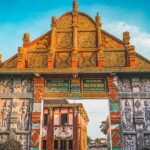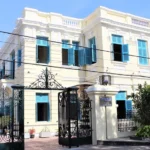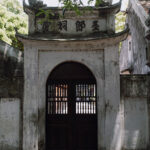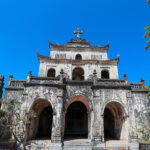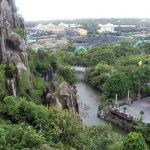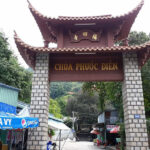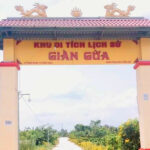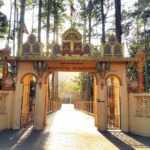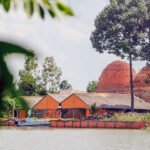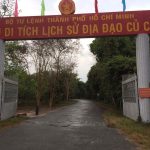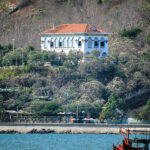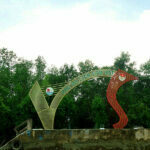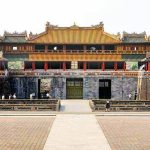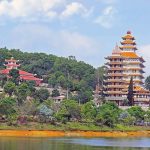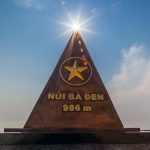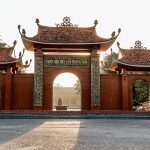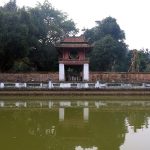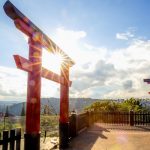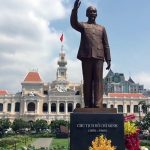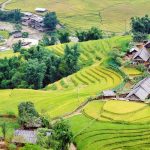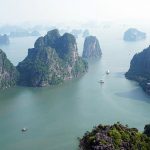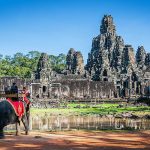When mentioning Hanoi, many tourists will probably think of the old quarters that preserve the lifestyle of the Vietnamese people in the past. But other think of a Vietnam with a thousand years of civilization that preserves a part of the heroic history of the nation. And the Vietnam National Museum of History (VNMH) is probably the destination that gives you the opportunity to go back in time, witness and learn about the history of the nation with valuable artifacts, depicting the culture and history of the country.
General information of Vietnam National Museum of History
The Vietnam National Museum of History was established on the basis of merging the former National Museum of Vietnamese History and the National Museum of the Vietnamese Revolution.

Currently, the National Museum of History is preserving and displaying more than 200,000 artifacts and documents on Vietnamese history and culture. Of which, the period from Prehistoric times to 1945 accounts for nearly 110,000 documents and artifacts, including many relics, antiquities and 20 National Treasures.
The rare collections here belong to many archaeological cultures such as the Paleolithic period, the Bronze and Early Iron ages, Dong Son culture, ancient Vietnamese enameled pottery, bronze wares of the Le-Nguyen period, Champa stone sculptures and decorative arts from countries such as China, Japan, India and Southeast Asia.
The historical period from the mid-19th century to the present has about 80,000 documents and artifacts on the history of the Vietnamese revolution, the Communist Party of Vietnam, President Ho Chi Minh and Party leaders through the periods.

The Vietnam National Museum of History is under the Ministry of Culture, Sports and Tourism. This is a large-scale museum and ranks first in the list of historical – social museums and Vietnam today. In addition to the function of storage and preservation, the museum also has the function of archaeological excavation, scientific research, inventory, display, introduction, and promotion of the value of artifacts and documents on the historical process of Vietnam… The VNMH is currently a member of the International Association of Museums (ICOM) and a founding member of the Association of Asian National Museums (ANMA).
The museum is at the back of the Hanoi Opera House. It’s on 1 Trang Tien street where displays Vietnamese History from Prehistoric times to the end of the Nguyen Dynasty in 1945, and on 216 Tran Quang Khai street displays Vietnamese History from the mid-19th century to the present.

Opening hours and entrance fees
The National Museum of History is open every day of the week (except Monday). You can come during 2 time slots: 8:00 – 12:00 and 13:30 – 17:00.
To visit the museum, you need to buy tickets at the following prices:
- Adults: 40,000 VND/person
- Students: 10,000 VND/person
- Students: 20,000 VND/person
- Children under 6 years old and people with severe disabilities: Free
Discover interesting things at the Vietnam National Museum of History
Explore the history of the nation from prehistoric times to the end of the Nguyen Dynasty (1945)
The building at 1 Trang Tien (formerly the Vietnam History Museum) was built in 1926 and inaugurated in 1932, named Louis Finot Museum. The museum’s exhibition building was designed as a work of art, a unique architectural work with a harmonious combination of Eastern architectural style and Western architectural beauty. After its inauguration, the museum exhibited Oriental art, including collections of archaeological, ethnological, and fine art artifacts from Vietnam and some Asian countries. In 1958, the Vietnamese Government officially took over this cultural work. After 5 months of adjustment, the exhibition content was transformed from an art history museum into a social history museum introducing the historical process of Vietnam from prehistoric times to the end of the Nguyen Dynasty (1945).

Vietnam’s prehistoric period: displaying traces of humans on the territory of Vietnam from the mountains, midlands, plains to the islands. These traces include ape teeth, labor tools and fossilized animal remains.
The first traces of humans such as: teeth of upright apes, fossilized animal remains discovered in caves… and labor tools discovered with the characteristics of pebble tools … have reflected that Vietnam is one of the cradles of human appearance and the first living activities of humans very early.

Entering the “New Stone Age”, the development of tools made from bedrock, pebbles… with rudimentary chipping techniques, or grinding blades to create types of tools such as: blade-sharpened axes, iron-shaped tools, chiseled axes… in addition, the appearance of pottery, rich in quantity, style and type.
The period of nation building: Vietnam is one of the countries in Southeast Asia that first mastered the techniques of smelting and casting bronze and iron. Around the middle of the first millennium BC, three major cultural and civilizational centers were formed in Vietnam, which served as the material basis and foundation for three ancient nations to form and develop brilliantly in the centuries before and after the Christian era: Dong Son culture – Van Lang and Au Lac states; Sa Huynh culture – Champa Kingdom; Oc Eo cultures – Funan Kingdom.

In particular, Dong Son culture with wet rice agriculture and highly developed bronze casting technology soon became the material basis for the formation of the early Van Lang – Au Lac state, opening the first period of nation building and laying the foundation for the cultural tradition of the Vietnamese people.

Vietnam after the Common Era from the 1st to 10th centuries. In 111 BC, the Han Dynasty launched an attack on Nam Viet (the old name of Vietnam), the Trieu Dynasty collapsed, and the country was placed under the domination of the Northern feudal dynasties (China). The consistent policy of this period was the policy of cultural assimilation, however, the presence of collections of artifacts bearing strong Dong Son cultural elements such as bronze drums, pottery, bronze bells… demonstrated the strong vitality of Vietnamese culture as well as the absorption of the quintessence of human culture to develop national culture.

Besides, the struggle for national independence was also demonstrated through the uprisings: Hai Ba Trung, Ba Trieu, Ly Bi, Mai Thuc Loan, Phung Hung… In 938, the resounding victory on Bach Dang River by Ngo Quyen against the Southern Han army ended a thousand years of domination by the Northern feudal dynasties, opening a new era – the era of national independence.
Vietnam from the 10th century to the mid-20th century. After Ngo Quyen’s victory at Bach Dang in 938, Vietnam entered a period of brilliant development: the era of Dai Viet – Vietnam civilization. The feudal states continuously built and consolidated independence and autonomy, built a strong country, a unified nation, territorial integrity and developed national culture.

This period left behind a massive cultural heritage including both tangible and intangible heritage, spread across the country from North to South, the result of the creative labor of the Vietnamese ethnic community, of outstanding cultural figures, representing the intelligence and soul of the nation.
Vietnam from the mid-19th century to the present
The building at 216 Tran Quang Khai (formerly the Vietnam Revolution Museum) was built in 1917 as the headquarters of the Indochina Trade Department. In 1954, the North was liberated, the Government Council, headed by President Ho Chi Minh, decided to renovate and convert this place into the Vietnam Revolution Museum, displaying the history of Vietnam from the mid-19th century to the present day.
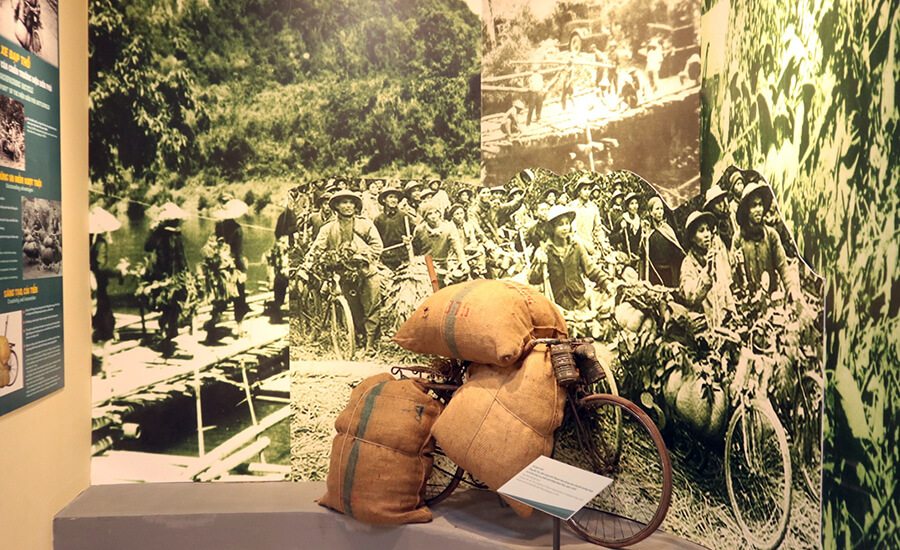
After 5 years of building the content, the Museum was officially inaugurated and opened to visitors on January 6, 1959.
Admire the unique architectural space
The National Museum of History has a romantic and unique French architectural style. The museum facade is designed to create a large exhibition space with an octagonal main hall, each side is 11m long. The space behind the rectangular hall is elongated, cleverly designed through the room.

Below is the ground floor used for exhibition, storage, warehouse and administrative rooms, designed as a moisture-proof room, keeping the exhibition space dry in the typical humid weather of Hanoi. The building stands out with a high octagonal roof system, consisting of three layers of roofs with different slopes. The lower roof layer is wider, providing shade and rain protection, supported by a double row of columns and a stylized lacquer system, bringing a distinct Asian beauty.
The Vietnam National Museum of History (VNMH) is not only a place to preserve and display precious historical values, but also an attractive destination, helping you better understand the history and culture of Vietnam. Follow Vietdreamtravel guide to discover more interesting things about three-region tourism.
Source: collected by An
Follow us for the best deal with Vietnam package tours and visa services!





































